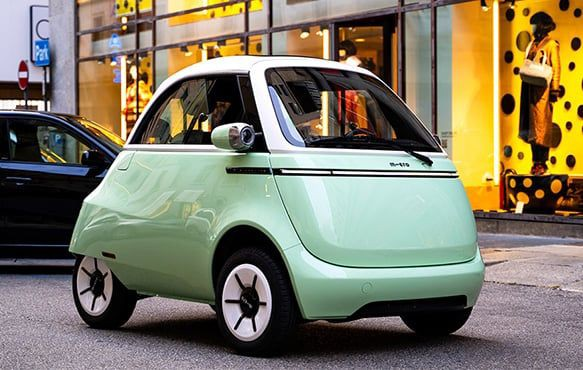As Indian cities grow denser and traffic congestion worsens, microcars are emerging as a practical solution for urban mobility. Compact, fuel-efficient, and easy to maneuver, these small vehicles are gaining popularity among city dwellers who prioritize convenience over size. With rising fuel prices, limited parking spaces, and growing environmental concerns, microcars offer an appealing alternative to traditional vehicles.
What Are Microcars?
Microcars are small, lightweight vehicles designed for short-distance travel. Typically, they have engine capacities below 1000cc, making them more fuel-efficient than regular cars. Some well-known models in India include the Tata Nano (though discontinued), Bajaj Qute, and electric microcars like the MG Comet EV. These cars are designed to navigate narrow city streets with ease, making them ideal for urban environments.
Why Are Microcars Becoming Popular?
- Space Constraints in Cities
India’s major cities, such as Mumbai, Delhi, and Bengaluru, struggle with space shortages. Finding parking is a daily challenge, and microcars solve this issue with their compact design. Many of these cars occupy half the space of a standard sedan, making them a preferred choice for city commuters.
- Rising Fuel Prices
With fluctuating fuel costs, many Indians are looking for cost-effective transportation options. Microcars consume significantly less fuel than larger vehicles, making them a budget-friendly choice for daily commuters. Some electric microcars, like the MG Comet EV, further reduce fuel dependency, offering a sustainable solution.
- Affordability
Microcars are generally more affordable than regular cars, both in terms of upfront cost and maintenance. Models like the Bajaj Qute offer an economical entry into car ownership, making personal transport more accessible to middle-class consumers.
- Easy Maneuverability in Traffic
Indian roads are often congested, and larger vehicles struggle to navigate through narrow streets and heavy traffic. Microcars, with their small turning radius, allow drivers to weave through traffic efficiently, reducing travel time in busy urban areas.
- Growing Popularity of Electric Microcars
With a push towards electric vehicles (EVs), many manufacturers are introducing micro-EVs. These vehicles produce zero emissions, aligning with India’s sustainability goals. Electric microcars also benefit from government incentives, making them an attractive choice for environmentally conscious buyers.
Challenges in the Microcar Market
While microcars offer several advantages, they face challenges as well. Safety remains a concern, as smaller vehicles often lack the robust build and safety features of larger cars. Additionally, while they are ideal for short distances, their performance on highways or rough terrains is limited.
Another hurdle is perception—many Indian consumers associate car ownership with status, and microcars are often seen as budget alternatives rather than aspirational purchases. However, with increasing urbanization and changing priorities, this perception is gradually shifting.
The Future of Microcars in India
With growing urban populations, government incentives for EVs, and rising fuel prices, microcars are poised for further growth. Companies are investing in better designs, improved safety features, and electric models to cater to evolving consumer demands.
As cities continue to expand and traffic challenges increase, microcars may soon become the go-to option for urban mobility in India. Their affordability, efficiency, and convenience make them an ideal choice for city dwellers looking for practical and sustainable transportation solutions. Technology is playing a crucial role in the evolution of microcars, making them more appealing to urban consumers. Modern microcars come equipped with features such as touchscreen infotainment systems, smartphone connectivity, and advanced driver assistance systems (ADAS). Some electric models also offer regenerative braking and fast-charging capabilities, enhancing their efficiency and convenience.
Additionally, companies are exploring car-sharing and subscription-based models, allowing users to access microcars without the burden of ownership. These innovations make microcars a smart choice for short-distance travel, reinforcing their position as a viable alternative to traditional vehicles in India’s rapidly urbanizing landscape.



